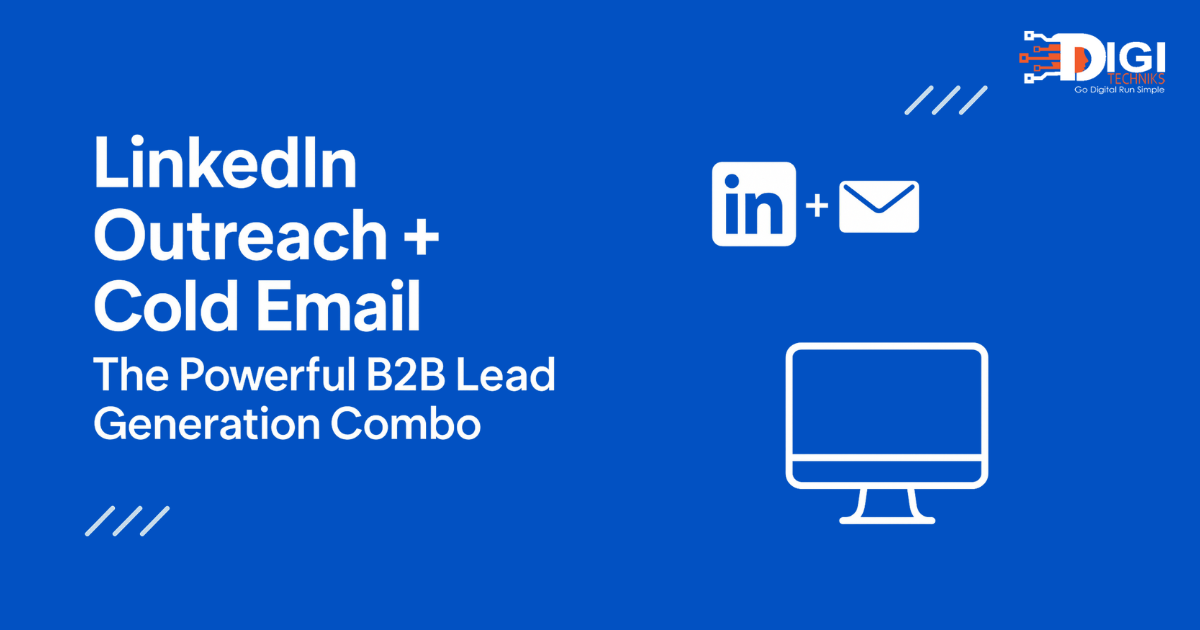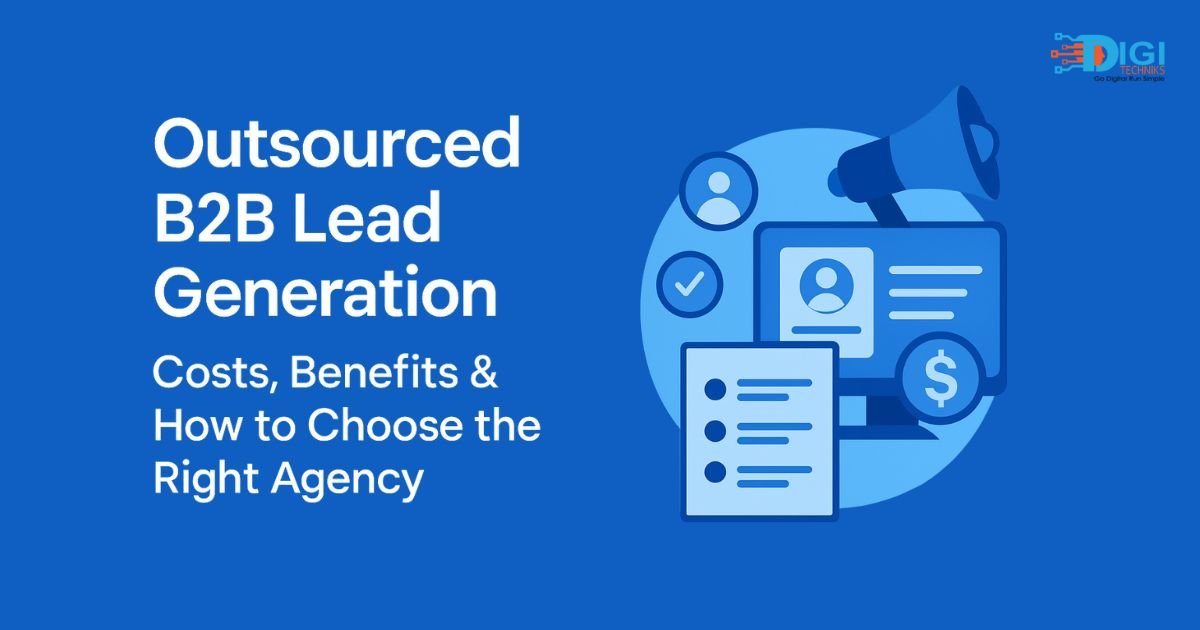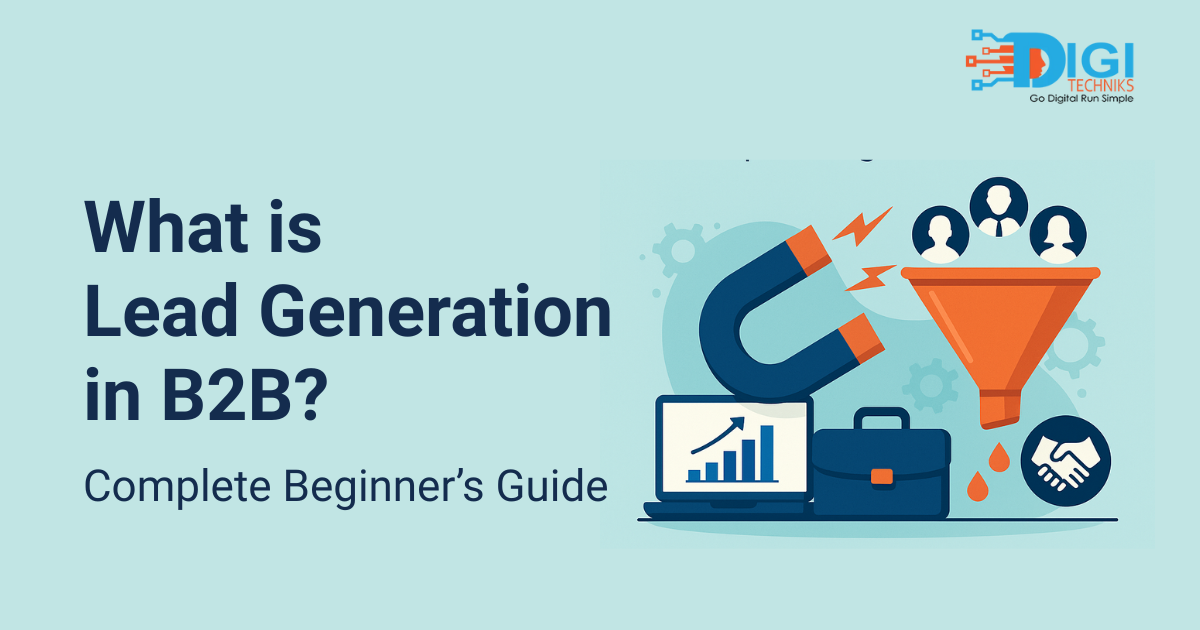Why SEO is Critical for B2B Lead Generation
If you’re a B2B business looking for sustainable and cost-effective growth in 2025, mastering SEO is non-negotiable.
Unlike paid ads that vanish once your budget runs dry, SEO builds long-term visibility—bringing in qualified leads even when you’re offline. It attracts decision-makers who are actively searching for solutions, not just scrolling passively.
And when done right, SEO doesn’t just drive traffic—it delivers business-ready leads with real intent.
At Digitechniks, we’ve helped dozens of B2B brands consistently rank for high-converting keywords and generate organic leads without depending on paid channels.
As a specialized B2B lead generation agency in India, we combine deep keyword intent analysis, content strategy, and technical SEO to turn websites into lead-generation machines.
This guide is your step-by-step blueprint to doing the same.
Whether you’re a SaaS company, consulting firm, or service provider, you’ll learn exactly how to implement SEO strategies that bring in high-quality B2B leads—organically and predictably.
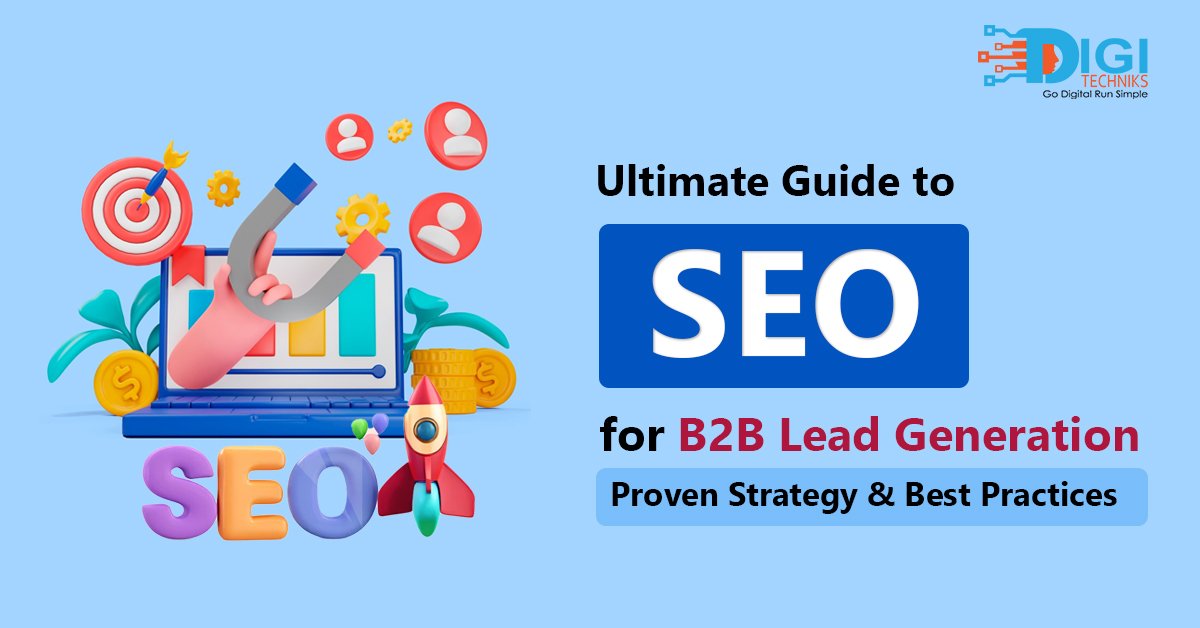
Understanding the SEO Keyword Universe (Intent-Based Keyword Research)
Before you rank, you need to understand what people are searching and why they’re searching it. That’s where keyword intent comes in.
Here’s a breakdown of the different types of keyword intents you need to master for effective B2B SEO and lead generation:
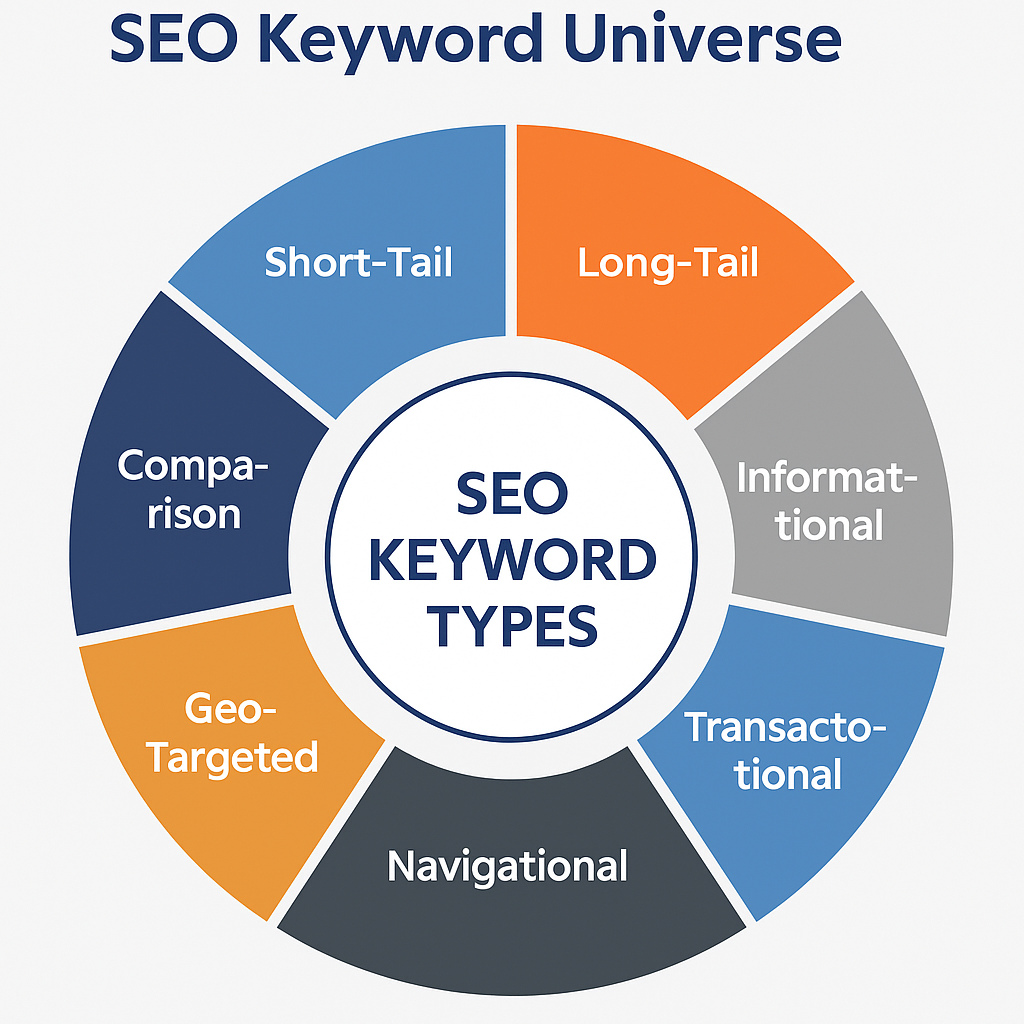
1. Short-Tail Keywords (Broad Terms)
These are generic, high-volume searches like “digital marketing” or “CRM software.”
📉 High competition, low conversion.
✅ Useful for brand awareness, but not great for generating qualified leads.
2. Long-Tail Keywords (Specific Queries)
These are 4–6 word phrases like “best CRM software for B2B startups.”
📈 Lower competition, higher conversion.
✅ Ideal for targeting buyers with clear intent and niche needs.
3. Informational Keywords (Top-of-Funnel)
Used by users seeking knowledge, such as “how to generate B2B leads organically.”
✅ Great for blog content, lead magnets, and nurturing cold traffic.
4. Transactional Keywords (Bottom-of-Funnel)
These show buying intent: “hire SEO agency for B2B” or “B2B lead generation pricing.”
💰 High commercial value.
✅ Perfect for service pages and landing pages.
5. Navigational Keywords
Used by people already familiar with your brand, e.g., “Digitechniks B2B SEO services.”
✅ Helps retain existing interest and guides direct traffic to convert faster.
6. Geo-Targeted Keywords
Include locations like “B2B lead generation agency India” or “SEO consultant Bangalore.”
✅ Ideal for local SEO and ranking for region-specific service searches.
7. Comparison Keywords
People comparing options: “HubSpot vs Zoho for B2B” or “SEO vs PPC for lead generation.”
✅ Position your brand as an expert while addressing decision-stage concerns.
8. LSI Keywords (Latent Semantic Indexing)
These are related terms that provide context, like “organic traffic,” “search visibility,” or “inbound leads” when writing about SEO.
✅ Google uses them to understand content depth and relevance.
💡 Why Intent Alignment Matters
When your content matches the searcher’s intent, you not only improve rankings—you attract the right people at the right time in their buying journey.
Intent-driven SEO = better engagement, lower bounce rates, and more qualified B2B leads.
Keyword Research & Mapping for B2B Service Pages
Your service pages are your digital storefronts—and the right keywords make sure your ideal customers walk through the door.
Here’s a proven 3-step approach to identify, research, and map keywords that generate qualified B2B leads:
✅ Step 1: Select a Clear Focus Keyword for Each Service Page
Every service page should target one primary keyword that reflects your core offering.
Example: If you offer LinkedIn lead generation services, your focus keyword might be “LinkedIn lead generation agency.”
This keyword becomes the foundation for your on-page SEO: URL, H1, meta title, and internal links.
✅ Step 2: Conduct Comprehensive Keyword Research
Use trusted SEO tools like Ahrefs, SEMrush, or Ubersuggest to find:
- Search volume: Is the keyword being searched?
- Keyword difficulty: Can you realistically rank for it?
- Intent: Does it match what your target customer is looking for?
- Related & long-tail variations: For content depth and supporting clusters.
Don’t chase high-volume terms blindly—focus on relevance + intent for higher conversion.
✅ Step 3: Organize & Map Keywords by Intent and Relevance
Create a keyword map that aligns keywords to:
- Primary Service Pages (Transactional/Commercial intent)
- Blog Topics (Informational intent)
- Case Studies/Resources (Navigational + Informational intent)
Each page or blog should:
- Target 1 focus keyword
- Support with 2–3 LSI/related keywords
- Align with user intent (not just SEO metrics)
This structured approach ensures that every page on your site serves a unique purpose—and ranks for the right queries.
🔁 Repeat this process for all your core services to build a well-optimized B2B website that attracts and converts the right audience.
Strategic Content Development: Pillar and Cluster Approach
SEO that ranks and converts isn’t about writing random blogs—it’s about building content ecosystems. This is where the pillar-cluster model becomes your B2B SEO superpower.
Pillar Content: Your Core Service Pages
Pillar content refers to your main service pages—these should be deep, authoritative, and optimized around a high-intent, transactional focus keyword.
Key Components:
- Focus Keyword Integration: Seamlessly include the primary keyword throughout the content (URL, H1, subheadings, image alt tags).
- LSI & Contextual Keywords: Use related terms to support semantic relevance (e.g., “organic leads,” “SEO visibility,” etc.).
- On-Page SEO Elements:
- SEO-friendly URL
- Unique meta title and description
- Structured headings (H1–H3)
- Internal links to clusters and related services
- Schema markup (e.g., FAQ, Article)
Example: A service page titled “B2B SEO Agency Services” acts as a pillar for blogs around keyword research, technical SEO, and content optimization.
Cluster Content: Supporting Blogs Around Each Service
For every pillar page, build 5–6 cluster blogs that support and drive traffic to the pillar. These blogs should be mapped to the customer journey and keyword intent.
Content Type Breakdown:
- 📘 50% Educational Content
Examples:- “How SEO Helps B2B Businesses Generate Inbound Leads”
- “Top SEO Tools for B2B Marketers in 2025”
Purpose: Establish thought leadership, drive awareness.
- 🔍 30% Seeding Content
Examples:- “Case Study: How We Generated 500 B2B Leads Using SEO”
- “Behind the Strategy: SEO Blueprint for a SaaS Client”
Purpose: Show your process and subtle service positioning.
- 📩 20% Inquiry-Generating Content
Examples:- “Checklist: Is Your B2B Website SEO-Ready?”
- “Download: SEO Audit Template for B2B Companies”
Purpose: Capture leads, prompt bookings, offer downloads.
How It Works Together
- Each cluster blog links to the pillar page, improving its SEO strength.
- Pillar pages serve as the conversion anchor, while clusters drive traffic.
- Together, they help Google understand topical authority—and guide users from awareness to action.
Leveraging Case Studies for Informational Keyword Ranking
In B2B SEO, case studies are more than proof—they’re powerful content assets that can rank for high-intent, informational keywords. Instead of treating them like static testimonials, you should structure case studies to answer common search queries that your potential clients are actively Googling.
For example, a blog titled “How We Helped a SaaS Company Increase Organic B2B Leads by 230%” can easily rank for keywords like “how to increase B2B leads organically” or “SEO case study for SaaS.”
By framing the narrative around specific challenges, solutions, and outcomes, you turn a case study into an informational article with real SEO potential.
The key is to align each case study with your SEO-focused keywords.
Use intent-matched titles, subheadings, and even FAQs to enhance relevance. Don’t forget to optimize meta tags, internal linking, and schema markup for maximum discoverability.
Finally, integrate these case studies directly into relevant service pages. Embedding them within or linking contextually adds depth to your offering and builds trust—while boosting time-on-page and reducing bounce rates.
It’s a win for both UX and SEO, positioning your brand as both credible and results-driven in the eyes of Google and your prospects.
You can also explore our full guide on Zero‑Budget B2B Lead Generation (2025) for organic strategies that complement Cold Email Outreach.
SEO Optimization Techniques for B2B Service Pages
Once you’ve mapped the right keywords and created valuable content, it’s time to make your service pages search-engine ready. Effective on-page SEO isn’t just about rankings—it’s about improving user experience, discoverability, and conversion rates.
On-Page SEO
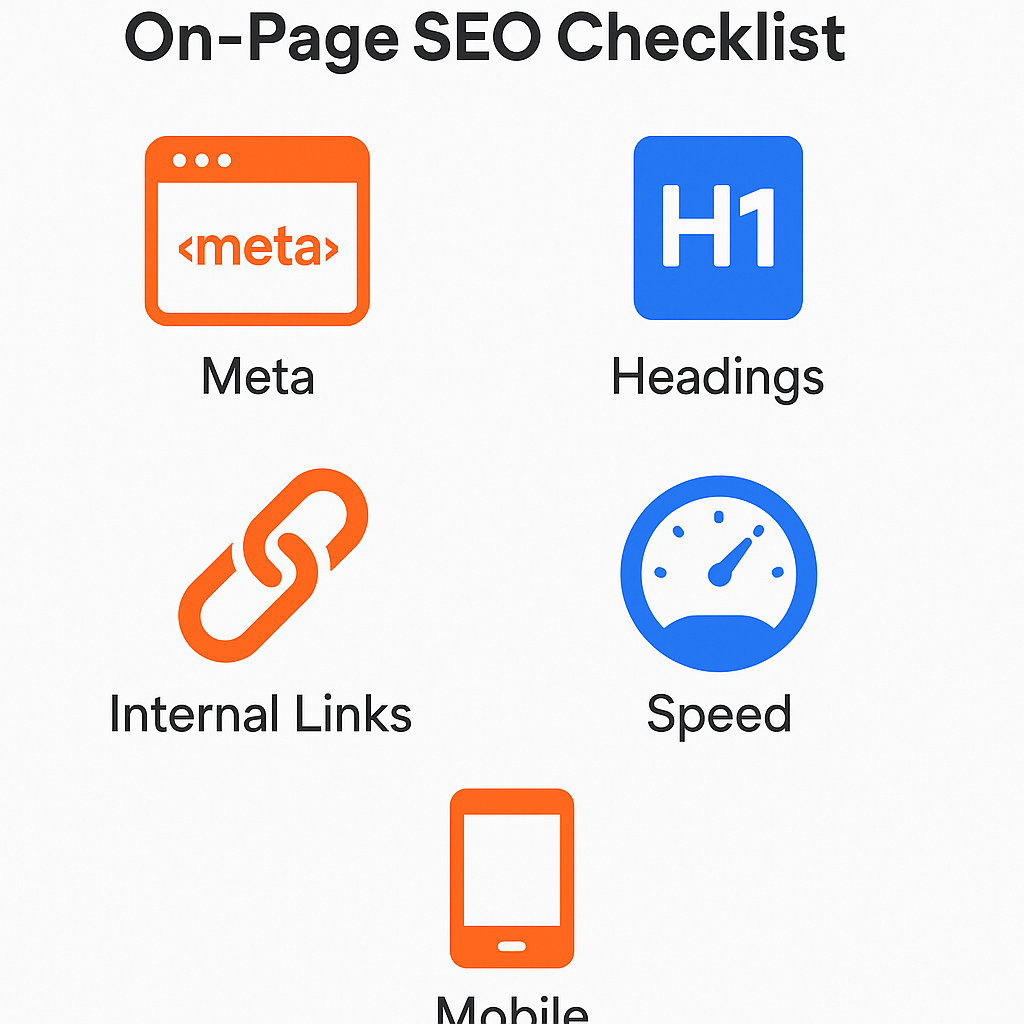
🏷️ Meta Tags Optimization
Start by crafting unique meta titles and descriptions for every service page. Your title should include the focus keyword (e.g., “SEO for B2B Lead Generation”) and stay under 60 characters. The description should summarize your offering in under 155 characters, encouraging clicks while integrating secondary keywords naturally.
📚 Strategic Use of Headings (H1, H2, H3)
Use headings not just for structure, but for semantic SEO. Your H1 should reflect the focus keyword. Break content into sections using H2s and H3s that incorporate variations and LSI keywords. This helps Google understand your content hierarchy and improves readability for users.
🔗 Internal Linking Strategies
Link each service page to relevant blogs, case studies, and other services. Use descriptive anchor text like “B2B SEO Strategy” instead of generic terms like “click here.” This improves site crawlability and guides users toward deeper engagement on your website.
🖼️ Image Optimization
Compress images for faster load speeds and use descriptive filenames and alt tags that include target keywords where relevant. This enhances accessibility and contributes to image SEO, which can drive additional traffic through Google Images and featured snippets.
📱 Mobile Optimization & Core Web Vitals
Google prioritizes mobile-first indexing, so your service pages must load quickly, display responsively, and be easy to navigate on all devices. Aim for a load time under 3 seconds, fix CLS (cumulative layout shift) issues, and pass Core Web Vitals to avoid ranking penalties.
When these techniques are implemented correctly, your B2B service pages become high-performance lead generators—optimized for both people and search engines.
Off-Page SEO & Promotion Techniques
Creating high-quality content is only half the battle. To boost your B2B website’s authority and visibility, you need a strong off-page SEO and content promotion strategy. This ensures your content earns trust signals (like backlinks) and reaches the right audience.
📣 Content Distribution on Social & Industry Platforms
Start by sharing your service pages, blogs, and case studies across LinkedIn, Twitter, and niche-specific communities like Reddit, Quora, and relevant Slack or Facebook groups. Tailor your messaging to each platform to spark discussion and engagement. The goal here isn’t vanity metrics—it’s visibility among decision-makers.
🔗 Backlink Building Through Guest Posts, PR & Partnerships
High-authority backlinks remain a top ranking factor in Google’s algorithm. Contribute guest blogs to industry sites, collaborate with complementary service providers, and seek mentions in industry press. Focus on links that are relevant, earned, and embedded in context—not spammy directories.
Example: Write for “YourStory,” “MarketingProfs,” or SaaS partner blogs to earn contextual backlinks to your SEO or lead gen pages.
🤝 LinkedIn & Cold Email for Link Amplification
Don’t wait for organic shares. Proactively use LinkedIn automation tools and cold email outreach to share your content with influencers, prospects, and partners. Reach out with personalized messages offering genuine value—such as “This case study may be relevant to your team.”
This not only builds backlinks but opens up conversations with potential collaborators and clients.
When executed consistently, these off-page strategies dramatically improve your domain authority, search rankings, and referral traffic—turning SEO into a long-term, compounding growth engine.
Measuring and Monitoring SEO Success
SEO isn’t a one-time setup—it’s a continuous performance engine that must be tracked, measured, and optimized over time. For B2B lead generation, tracking the right KPIs ensures that your efforts aren’t just driving traffic, but converting the right audience into real business opportunities.
🎯 Define Clear SEO KPIs That Align with B2B Goals
To truly measure the ROI of SEO, focus on metrics that tie back to business impact:
- Organic Traffic: Is your traffic growing month over month?
- Keyword Rankings: Are your core service and blog pages ranking for strategic keywords?
- Click-Through Rate (CTR): Are users clicking your listings in Google results?
- Conversion Rates: How many visitors are filling forms, booking calls, or downloading lead magnets?
Set benchmarks for each metric and measure progress consistently.
🛠️ Use Reliable SEO Tracking Tools
Leverage industry-trusted tools to collect accurate performance data:
- Google Analytics 4: Understand user behavior, traffic sources, and goal conversions.
- Google Search Console: Monitor search performance, index coverage, and keyword visibility.
- Ahrefs / SEMrush: Track keyword rankings, competitor analysis, and backlink profiles.
- Looker Studio (formerly Data Studio): Create live dashboards for easy reporting.
🔁 Continuous Optimization = Continuous Growth
Don’t treat SEO as “set it and forget it.” Use the data you gather to make informed updates:
- Refresh underperforming blog content
- Optimize pages with high impressions but low CTR
- Add internal links to low-ranking service pages
- Improve loading speed and mobile UX based on Core Web Vitals
This cycle of measure → optimize → grow is what separates average SEO from revenue-generating SEO.
ROI of SEO vs. Other Marketing Channels
When it comes to lead generation, every marketing channel promises results—but not all deliver sustainable ROI. SEO stands out as a long-term asset that continues to generate value, even when you pause your budget. In contrast, paid ads stop delivering the moment you stop spending, and social media often brings in awareness, but not always high-intent traffic.
SEO delivers compounding returns by increasing your organic visibility and attracting users actively searching for your services. While initial setup and content investment may seem high, over time, the cost-per-lead (CPL) from SEO drops significantly. Unlike ads that charge per click, SEO brings recurring traffic at no additional cost.
More importantly, SEO drives qualified inbound leads—decision-makers who are already aware of their problems and are looking for a solution. This increases conversion rates and shortens your sales cycle. Combined with targeted outreach (like LinkedIn and email), SEO forms the foundation of a high-ROI, demand-generation engine for B2B businesses.
📊 SEO vs Other Channels: ROI Comparison Chart
| Channel | Cost Per Lead | Lead Quality | Long-Term ROI | Sustainability | Control Over Targeting |
| SEO | Low (drops over time) | High (intent-based searchers) | Excellent | Very High (evergreen) | Medium (via keywords) |
| Paid Ads (Google/Facebook) | High (CPC dependent) | Medium (depends on targeting) | Short-term burst | Low (requires ongoing spend) | High |
| Social Media | Medium | Low–Medium | Branding-focused | Medium | Medium |
| Email Marketing | Low–Medium | High (if list is targeted) | Good | High (with nurturing) | High (owned audience) |
This comparison proves what many marketers are realizing in 2025: SEO is the most cost-effective and scalable channel when executed strategically. It’s not just about ranking—it’s about owning your growth.
Omni-Channel Marketing Strategy: SEO + LinkedIn + Cold Email Outreach
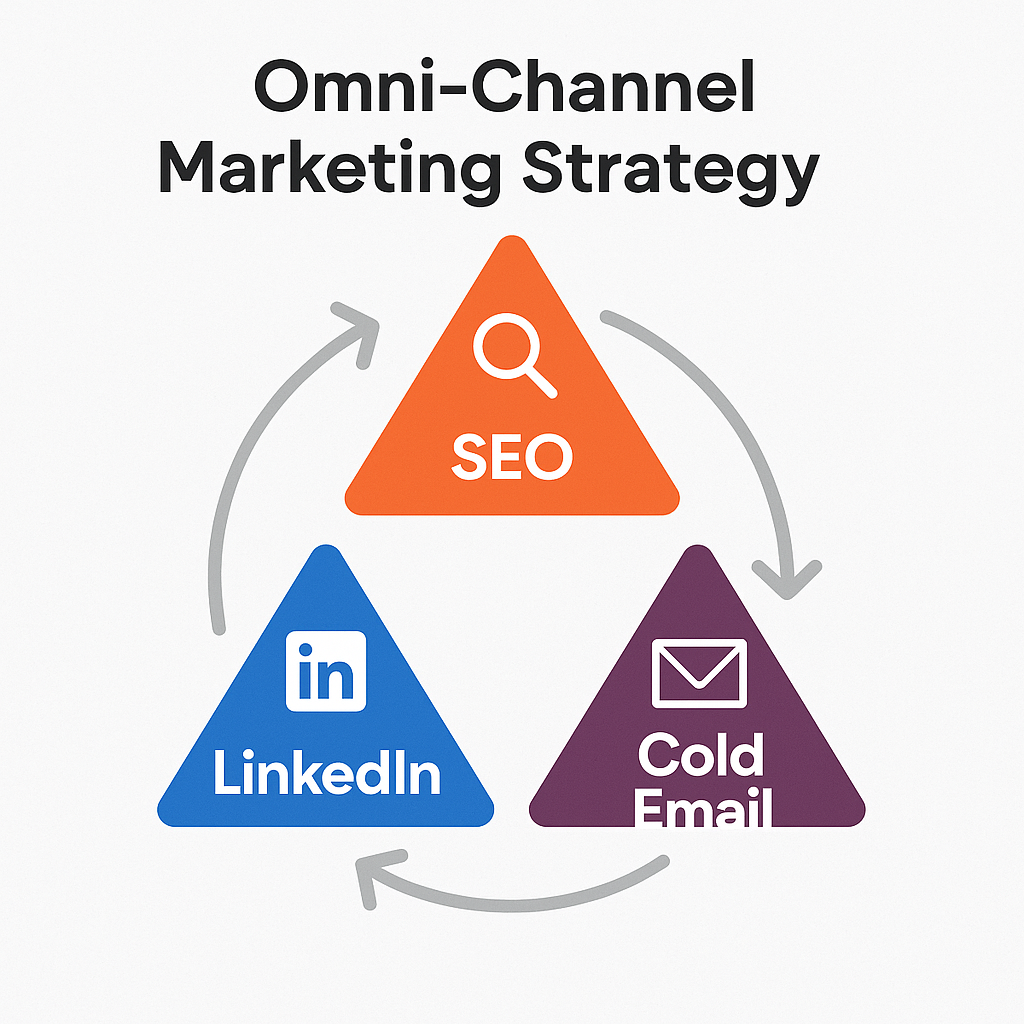 Relying on a single marketing channel limits your reach—and your results. In today’s competitive B2B landscape, a holistic omni-channel strategy isn’t just smart—it’s essential.
Relying on a single marketing channel limits your reach—and your results. In today’s competitive B2B landscape, a holistic omni-channel strategy isn’t just smart—it’s essential.
By combining the organic authority of SEO, the personal engagement of LinkedIn automated outreach, and the scalability of cold email campaigns, you cover all stages of the buyer’s journey. Prospects may first discover you via Google, engage with a LinkedIn message, and then convert after a well-crafted follow-up email. It’s this repeated, consistent exposure that builds trust and drives action.
To amplify your SEO efforts, pair it with a proven cold email outreach blueprint that targets high-intent leads through personalized sequences.
At Digitechniks, our B2B clients consistently see 30–50 qualified meetings per month using this layered approach. SEO attracts inbound traffic from high-intent searchers. LinkedIn automation builds 1:1 relationships with decision-makers. Cold emails reinforce your presence and open new conversations—all working together in a synchronized pipeline.
Our LinkedIn automated outreach strategy complements SEO by helping you connect with decision-makers directly—driving even more qualified leads.
The result? A marketing system that builds credibility, nurtures leads faster, and delivers measurable ROI—without relying on paid ads. This is how modern B2B lead generation is done right.
⚠️ Common Mistakes to Avoid in SEO for B2B
Avoiding these common pitfalls can be the difference between ranking on page 1 and getting buried in search results.
❌ 1. Targeting Irrelevant or Overly Competitive Keywords
Many B2B brands chase high-volume keywords that don’t match their niche or buyer intent—leading to poor-quality traffic and low conversions.
❌ 2. Ignoring User Intent in Content Creation
Publishing content that doesn’t solve real problems or answer questions leads to high bounce rates and lost trust. Always align content with what your audience is searching for.
❌ 3. Inconsistent Content Publishing
Publishing a blog once every few months won’t move the needle. B2B SEO requires consistent, strategic content to build authority and sustain traffic growth.
❌ 4. Poor On-Page Optimization
Skipping essentials like meta titles, internal links, and proper headings makes it harder for Google to understand and rank your pages effectively.
❌ 5. Neglecting Technical SEO & Core Web Vitals
Slow page speed, poor mobile responsiveness, and broken links all hurt SEO rankings and user experience. Technical issues silently kill your visibility.
Fixing these issues early ensures your SEO strategy is built on a strong foundation—and avoids wasting time and budget on ineffective efforts.
Essential SEO Tools & Resources Recommended
The right SEO tools can save hours of manual work and give you the data-driven clarity needed to grow your B2B traffic. Here are our top picks across every SEO category:
🔍 Keyword Research
Ahrefs, SEMrush, Ubersuggest
These platforms help you find high-intent keywords, analyze competitors, check search volume, and assess keyword difficulty. Use them to build a strong SEO foundation aligned with B2B lead gen goals.
🛠️ SEO Audit
Screaming Frog, Google Search Console
Identify and fix technical issues like broken links, crawl errors, or duplicate content. Screaming Frog is ideal for deep on-site audits, while Search Console tracks how Google indexes your pages.
📊 Analytics & Reporting
Google Analytics 4, Looker Studio (formerly Data Studio)
Track user behavior, traffic sources, and conversions. Build live dashboards in Looker Studio to monitor KPIs like rankings, CTR, and lead submissions across your funnel.
✍️ Content Optimization
Surfer SEO, Frase.io
These tools help you write and optimize content based on keyword density, semantic relevance, and competitor benchmarks—making your blog and service pages rank-ready from day one.
Using these tools in combination ensures your B2B SEO strategy is data-driven, efficient, and performance-focused.
Why Partner with an Experienced B2B SEO Agency (Digitechniks)
Implementing SEO for B2B lead generation isn’t just about ranking—it’s about ranking with purpose. That’s where partnering with a specialized agency like Digitechniks makes all the difference.
We bring deep expertise in intent-driven SEO strategy, focusing on what matters most: attracting qualified decision-makers, not just increasing vanity traffic. Every page, blog, and backlink is mapped to a business objective—whether that’s booking a call, downloading a resource, or nurturing a sales conversation.
With a proven track record across B2B industries, our team combines strategy, content, and technical SEO to deliver predictable, organic lead generation at scale. From keyword research to automation-ready content plans, we use best-in-class tools and frameworks to keep your SEO both agile and effective.
If you’re serious about turning your website into a lead-generation engine, it’s time to work with a team that lives and breathes B2B SEO.
Conclusion
By now, you’ve seen that successful B2B lead generation through SEO is not about guesswork—it’s about strategic intent, consistent execution, and continuous optimization.
From understanding keyword intent and mapping service pages to building content clusters, optimizing technical elements, and promoting through omni-channel outreach—every piece plays a critical role in attracting and converting qualified B2B leads.
If you’re ready to put this strategy into action, we’re here to help you every step of the way.
📞 Ready to Grow? Take the Next Step
👉 Book Your Free SEO Audit & Strategy Session with Digitechniks
Let us analyze your website, identify missed opportunities, and outline a custom plan to drive organic B2B leads.
FAQs
What is the role of SEO in B2B lead generation?
SEO helps attract decision-makers who are actively searching for B2B solutions. It drives organic, high-intent traffic to your website, resulting in consistent lead flow without ad spend.
How do I choose the right keywords for B2B service pages?
Focus on long-tail, transactional, and industry-specific keywords that reflect buyer intent. Tools like Ahrefs, SEMrush, or Ubersuggest can help identify low-competition, high-conversion terms.
What is the pillar-cluster content model for B2B SEO?
The pillar-cluster model involves creating a detailed main page (pillar) and supporting it with related blog posts (clusters). This structure builds topical authority and improves internal linking.
How can case studies help in ranking for informational keywords?
Case studies that address specific problems or showcase real outcomes help rank for “how” and “why” queries. They also build trust and relevance with both users and search engines.
Can SEO be combined with LinkedIn and cold email outreach?
Yes, SEO builds inbound demand while LinkedIn automation and cold emails enable targeted outbound reach. Together, they create a scalable, omni-channel lead generation system.

Sharan Kulkarni
Sharan Kulkarni is a B2B Lead Generation Specialist and author of ROI Decoder, with 10+ years’ experience helping SaaS, IT, and service firms generate predictable qualified leads. He leads Digitechniks’ outreach strategies across LinkedIn, cold email, and SEO. Connect with Sharan on LinkedIn

